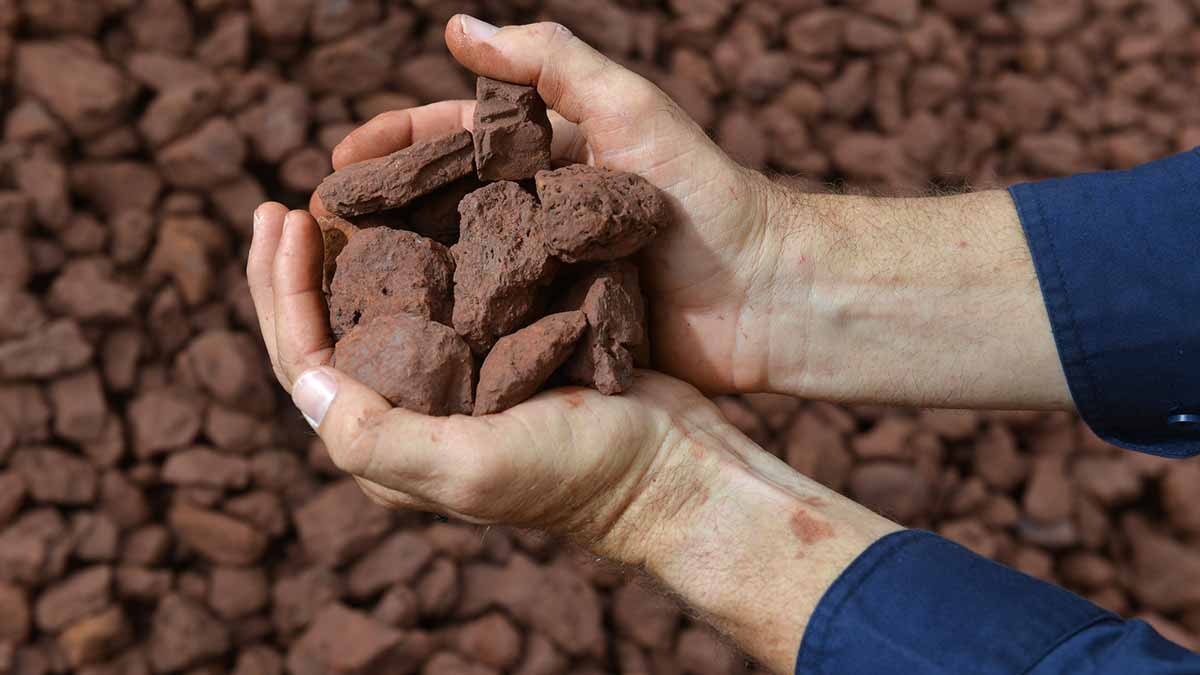Resource export earnings a bright spot for Australia, poised to hit record $299bn

Pic: Bloomberg Creative / Bloomberg Creative Photos via Getty Images
Despite challenging market conditions brought about by the COVID-19 outbreak, Australian resource and energy export earnings are still forecast to hit a record $299bn in the 2019-20 financial year, up $18bn from the previous year.
And it is Australia’s reliance on China as its main resources export partner that could be responsible given that China’s economy is already starting to get back on its feet while the virus starts to impact on other major economies.
Resources Minister Keith Pitt says the forecast demonstrates how resource and energy exports continue to support the Australian economy.
“The strength and diversity of Australia’s resource and energy commodities have allowed export earnings to overcome challenging world economic conditions — to the benefit of the Australian economy,” he explained.
The latest Resources and Energy Quarterly (REQ) noted that COVID-19 was expected to weigh on world economic growth and industrial production at the start of 2020 though growth was expected to rise slowly.
It added that the phase-one trade deal between China and the US could reduce trade tensions over time, though this remained a risk to world gross domestic product growth and commodity demand.
The Winners
Iron ore took centre stage with the REQ estimating that it will be the first commodity to exceed $100bn in export earnings in a single year.
This is due to iron ore prices remaining at unusually high levels as a result of persistent supply disruptions in mid-to-late 2019.
Export volumes are expected to grow from 874 million tonnes in 2019-20 to 898 million tonnes by 2020-21, and to 996 million tonnes by 2024-25 due to the start-up of new production at several large mines in Western Australia.

READ: Can Western Australia benefit from China’s expected stimulus response?
However, iron ore prices are projected to decline to an average $US70 ($116.8) a tonne (FOB Australia) in 2021, and $US61 a tonne by 2025 as supply disruptions are resolved over the next 12 months.
This could result in iron ore export values falling back to $72bn by 2024-25.
Gold is another winner, with the investment safe haven forecast to reach a seven-year high of $US1,475 an ounce in 2020, taking the real value of Australia’s gold exports to a record $26bn in 2019-20.
This is supported by growing production, with Australia tipped to overtake China as the world’s largest gold producing country in 2021.
The REQ’s estimates may also be conservative as April gold futures are trading well above the $US1,500 mark.
READ: Gold Digger: Have gold prices bottomed?
Copper and nickel are expected to be winners over the next five years due to higher anticipated production and prices.
Copper prices are expected to average $US5,990 a tonne in 2020 before rising an average 2 per cent each year to hit $US6,900 a tonne as consumption outpaces production.
Additionally, Australian copper exports are projected to rise from 929,000 tonnes in 2018-19 to around 1.1 million tonnes in 2024-25 due to growing production from new and existing mines.
This will in turn lift export earnings from $10bn in 2018-19 to $13bn in 2024-25.
Likewise, strong nickel consumption is expected to increase prices from an average of $US14,200 a tonne in 2019 to $US15,300 in 2020 and $US15,800 in 2025.
Production volumes are also flagged to increase from 225,000 tonnes in 2018-19 to 436,000 tonnes in 2024-25, which will increase export earnings from $3.7bn in 2018-19 to $6.6bn in 2024-25.

Lithium is also projected to be a winner despite recent challenges, with prices expected to rise from $US7,750 a tonne in the December 2019 quarter to around $US10,400 a tonne in 2025.
This is due to the higher uptake of electric vehicles that could lead to shortages in lithium supply from 2023.
Australian lithium production is expected to rise from 244,000 tonnes of lithium carbonate equivalent in 2018-19 to 393,000 tonnes in 2024-25.
Pitt said that with the resources and energy sector positioned to lead the bounce, the Australian government would move to remove any green or red tape that would stifle investment.
It is not all sunshine and rainbows
While iron ore and gold are driving growth in Australia’s commodity exports, some other materials are still facing challenges.
Metallurgical coal earnings are expected to decline from a record of $44bn in 2018-19 to $35bn in 2021-22 before bouncing back to about $38bn in 2024-25.
This is due to an expected reduction in spot prices from $US183 a tonne in 2019 to $US155 in 2022 due to soft demand growth and ramp-up of new production.
Thermal coal earnings are projected to fall from $26bn in 2018-19 to $21bn in 2019-20 due to recent price declines.
Export earnings are then expected to dip before levelling out in the $17bn to $20bn range through to 2024-25.
READ: The great coal debate of 2020: Is the industry going the way of the dodo?
After several years of growth, Australian liquefied natural gas earnings (LNG) are expected to level out due to a decline in oil price-linked contract prices.
LNG exports are forecast to decline from $51bn in 2018-19 to $49bn in 2019-20 and $44bn in 2020-21.
Production is expected to increase from 75 million tonnes in 2018-19 to 81 million tonnes in 2020-21 as the last two projects in the recent wave of LNG investment ramp up, before slipping back down to 80 million tonnes by 2024-25.
Aluminium, alumina and bauxite earnings are also expected to fall from a peak of $16bn in 2018-19 to $12bn in 2024-25 due to softening prices for aluminium and alumina and lower bauxite export volumes.
Related Topics

UNLOCK INSIGHTS
Discover the untold stories of emerging ASX stocks.
Daily news and expert analysis, it's free to subscribe.
By proceeding, you confirm you understand that we handle personal information in accordance with our Privacy Policy.








